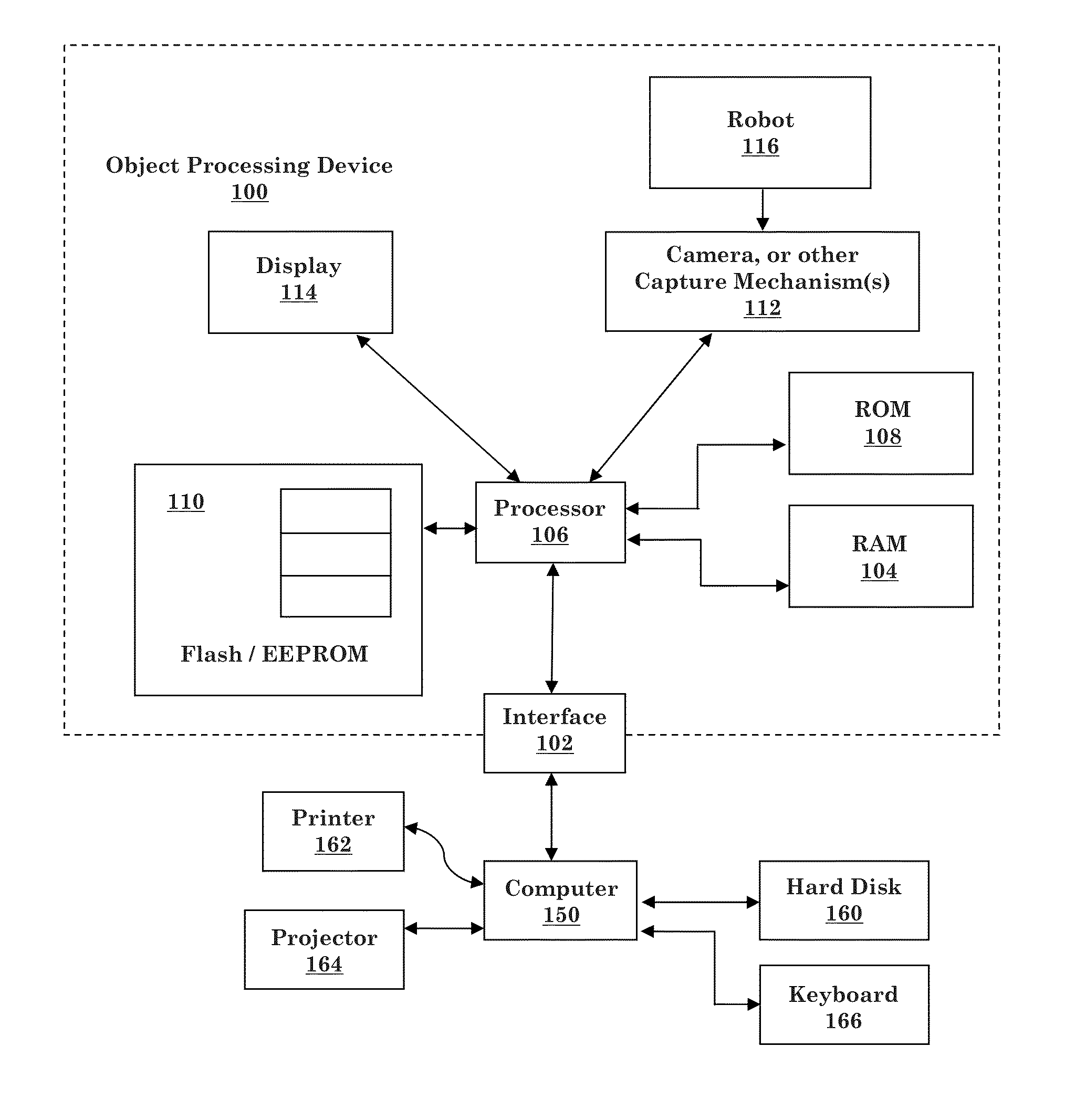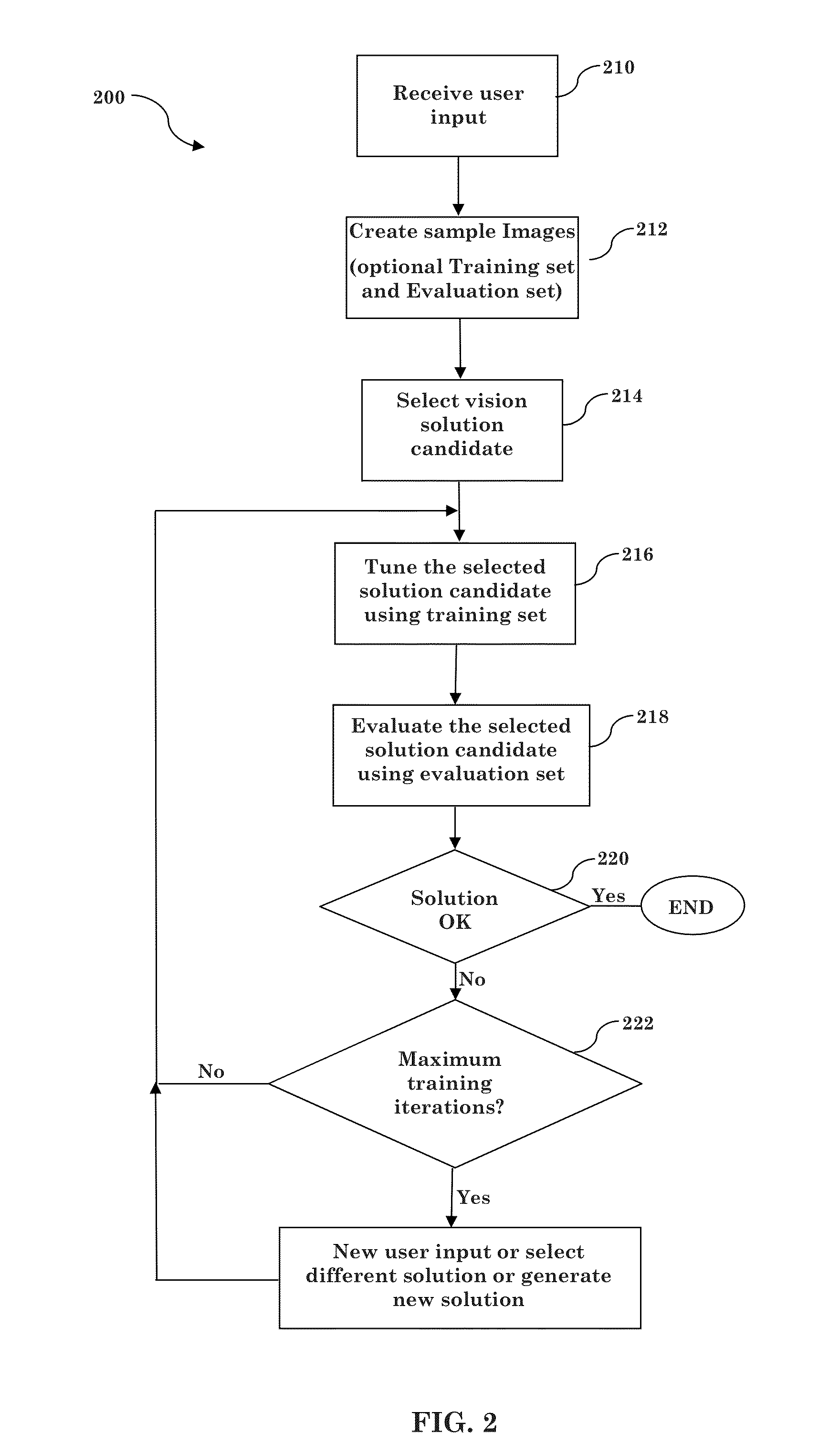Method and Apparatus for Improved Training of Object Detecting System
a training system and object technology, applied in the field of object detection or object recognition, can solve the problems of inability to inability to obtain, and single classifier cannot effectively detect objects whose appearance is subject to many changes, and achieve the effect of more automation
- Summary
- Abstract
- Description
- Claims
- Application Information
AI Technical Summary
Benefits of technology
Problems solved by technology
Method used
Image
Examples
experimental example
[0289]An experiment for construction of a multiple node detector of a test object (identified as ID3174) was implemented. The construction may follow the following steps:
[0290]1. Simulate (i.e., render in a manner described above) basic view images (selecting CAD model, distance or z, x=y=0, resolution (e.g. VGA 640×480), camera parameters or projection matrix, number of views, and / or limited view ranges, object material, and / or lighting etc.). In the present example, 66 basic views were used.
[0291]2. Once the basic views are simulated (66 view in the present example), image normalization is applied. There are many image normalization methods. For example, the object may be aligned by model registration. However due to its simple implementation, moment-based image normalization was used so that the images of the test object from different views were aligned to the object centroid and orientation was aligned to the Eigen axis of moments.
[0292]3. After normalizing the basic views, the...
PUM
 Login to View More
Login to View More Abstract
Description
Claims
Application Information
 Login to View More
Login to View More - R&D
- Intellectual Property
- Life Sciences
- Materials
- Tech Scout
- Unparalleled Data Quality
- Higher Quality Content
- 60% Fewer Hallucinations
Browse by: Latest US Patents, China's latest patents, Technical Efficacy Thesaurus, Application Domain, Technology Topic, Popular Technical Reports.
© 2025 PatSnap. All rights reserved.Legal|Privacy policy|Modern Slavery Act Transparency Statement|Sitemap|About US| Contact US: help@patsnap.com



